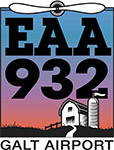A “rule of thumb” is an approximate method for doing something based on practical experience rather than theory. They are sometimes used when a pilot doesn’t have the time or tool’s available to make an exact calculation, and for that reason they can be very useful.
Often these rules of thumb have been around since the pioneering days of aviation and passed from one pilot to the next over many generations, but sometimes over time they can become misquoted, misunderstood or misused.
One such example is known as “the 70-50 rule.” I’ve heard two different versions of this rule of thumb including one that appears in official FAA publications, and yet no one seems to know where it originated. The problem with the most popular version of “the 70-50 rule” is that it doesn’t make sense and yet a lot of pilots are using it as if it were a scientific theory.
The widely quoted “70-50 rule” states that if you have not reached 70% of your rotation speed by the time you have used 50% of the available runway you should abort the takeoff. Anyone who takes a second to think about this can see this doesn’t make a lot of sense as a general rule because it doesn’t take into account the actual runway length, weight, atmospheric conditions or type of aircraft. It might have been accurate at some time in history for a specific scenario but no one knows what that was.
The FAA version of “the 70-50 rule” recommends if you have not attained 70% of your rotation speed by the time you reach 50% of your calculated takeoff distance, you should abort your takeoff. (GA Fact Sheet AFS-850 2019-12)
The FAA version of the rule makes more sense because it is based on a takeoff distance that has been calculated using current atmospheric conditions, weight, and by consulting the pilots operating handbook (POH) for a specific aircraft. Pilots know that the required takeoff distance is based on multiple variables and is therefore unique for each flight. This calculation must be performed before every departure.
The 70-50 rule of thumb can only be used as a method to help a pilot decide when they need to abort a takeoff when it is based on this calculation. The reason we use this rule of thumb is because the POH does not contain a performance table providing this data and there are no mathematical models or calculations available that provide this information.
To get the full FAA Aircraft Performance and Calculations fact sheet and other fact sheets click on this link; https://www.faa.gov/newsroom/safety-briefing/faa-safety-briefing-fact-sheets
Beth Rehm, CFII

